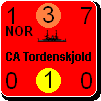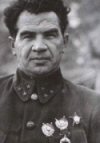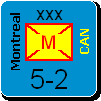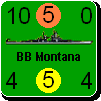Mad Russian
Posts: 13256
Joined: 3/16/2008
From: Texas
Status: offline

|
quote:
ORIGINAL: terje439
quote:
ORIGINAL: Mad Russian
96) Where is the last Japanese soldier known to have surrendered? The Phillipines in 1974.
Are you sure about the year 1974? I believe I've read about one guy surrendering in the early 80s as well? (I am not sure though)
Here are the stories of the two I know about. Both are from 1974.
Teruo Nakamura
Private Teruo Nakamura was a Taiwan-born soldier of the Imerial Japanese Army who fought for Japan and did not surrender until 1974.
Nakamura was an aborigine, probably Amis, from Japanese colonized Taiwan. He was conscripted into a Takasago Volunteer Unit of the Imperial Japanese Army in November 1943. He was stationed on Morotai Island in Indonesia shortly before the island was captured by the Allies in September of 1944. He was declared dead in March 1945.
He lived with a group of stragglers and in the 1950's broke away from them and constructed his own camp. Nakamura's hut was discovered accidentally by a pilot in mid-1974. In November 1974, the Japanese Embassy to Indonesia and requested assistance in organizing a search.
He was arrested December 18, 1974 and was repatriated back to Taiwan. At the time of his capture, he spoke neither Japanese or Chinese. Another sensitive issue was the question of back pay of his soldier's pension. As a conscripted private, Nakamura was not entitled to pensions after a 1953 change in the law on pensions, and thus received only a minimal sum of ¥68,000 ($227.59 US). This raised a considerable outcry in the press, motivating the government to donate a larger sum.
He died of lung cancer in 1979.
Hiroo Onoda
Second Lieutenant Hiroo Onoda,was an intelligence officer in the Imperial Japanese Army. Sent to the Phillipines in December 1944.
The first time they saw a leaflet which claimed that the war was over was in October 1945. However, they mistrusted the leaflet, since another cell had been fired upon a few days previously. They concluded that the leaflet was Allied propaganda, and also believed that they would not have been fired on if the war was indeed over.
In 1952 letters and family pictures were dropped from aircraft urging them to surrender, but the three soldiers concluded that this was a hoax. Shimada was shot in the leg during a shoot-out with local fishermen in June 1953, following which Onoda nursed him back to health, and on 7 May 1954 was killed by a shot fired by a search party looking for the men.
Kozuka was killed by two shots fired by local police on 19 October 1972, when he and Onoda burned rice that had been collected by farmers, as part of their guerilla activities, leaving Onoda alone. Though Onoda had been officially declared dead in December 1959, this event suggested that it was likely he was still alive and search parties were sent out, though none were successful.
On 20 February 1974, Onoda met Norio Suzuki. Onoda and Suzuki became friends, but Onoda still refused to surrender, saying that he was waiting for orders from a superior officer.
The Japanese government then located Onoda's commanding officer, Major Taniguchi. He flew to the Phillipines and on 9 March 1974 informed Onoda of the defeat of Japan in WWII and ordered him to lay down his arms.
Lieutenant Onoda emerged from the jungle 29 years after the end of World War II, and accepted his commanding officer's order of surrender, which he did in his uniform and sword. He still had his Arisaka Type 99 rifle with 500 rounds of ammunition and several hand grenades.
Upon his return to Japan he was very popular. He wrote a book but was upset at the social changes during his absence. In April 1975 he followed the example of his elder brother Tadao and left Japan for Brazil, where he raised cattle. He married in 1976, and assumed a leading role in the local Japanese community.
In 1980, Onoda read about a Japanese teenager who had murdered his parents, returned to Japan in 1984, and established the Onoda Shizen Juku ("Onoda Nature School") educational camp for young people.
He currently spends three months of the year in Brazil.
These are the two latest surrenders that I know of. Both were in 1974 but Onoda's surrender in the Phillipines was before Nakamura's in Indonesia. So, the last place was not the Phillipines.
It was striking to me that when the search parties went out to find these men they shot at them. They were being hunted not searched for IMO. No wonder they wouldn't believe the war was over and didn't want to surrender.
Good Hunting.
MR
< Message edited by Mad Russian -- 4/12/2009 4:00:56 PM >
_____________________________
The most expensive thing in the world is free time.
Founder of HSG scenario design group for Combat Mission.
Panzer Command Ostfront Development Team.
Flashpoint Campaigns: Red Storm Development Team.
|
 Printable Version
Printable Version















 New Messages
New Messages No New Messages
No New Messages Hot Topic w/ New Messages
Hot Topic w/ New Messages Hot Topic w/o New Messages
Hot Topic w/o New Messages Locked w/ New Messages
Locked w/ New Messages Locked w/o New Messages
Locked w/o New Messages Post New Thread
Post New Thread